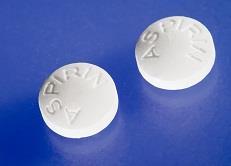Selecting a good solvent is the key to performing a successful recrystallisation
Ideally, the material to be recrystallised should be sparingly soluble at room temperature and yet quite soluble at its boiling point.
Introduction
Selecting a good solvent is the key to performing a successful recrystallisation. Ideally, the material to be recrystallised should be sparingly soluble at room temperature and yet quite soluble at its boiling point. Water can be used for recrystallising aspirin because it is cheap, readily available and safe. However, heating aspirin in water partially decomposes it, although the quantity of crystals obtained may be satisfactory. The product can be tested with Fe3+ (aq) to see whether any improvement in purity can be detected.
Procedure
Below is a list of the stages in recrystallisation, but not necessarily in the correct order. Think about each of the types of impurity above and put these stages in the correct order. Then match each of them to the boxes which describe what has been achieved. You could arrange the results first or you could cut out a copy of the chart and rearrange it.
| Stages | Results |
|---|---|
| Dry the product on a watch glass, either at room temperature or in an oven. | The product dissolves only in the hot solvent. Soluble impurities also dissolve, but there should not be so many impurities that the solution is saturated. Insoluble impurities stay in suspension. |
| Shake your sample with the solvent and warm to dissolve. | Insoluble impurities stay on the filter paper, soluble impurities and the product stay in solution and are found in the filtrate. |
| Wash the residue with a small amount of cold solvent. Why do you need to use the solvent cold? | The crystals are separated from the solvent which still contains soluble impurities, leaving the product contaminated only with solvent in which is dissolved a small amount of soluble impurity. |
| Allow the solution to cool slowly. If no crystals appear, add a single crystal as a ‘seed’ or stir vigorously for a few minutes. (If still no crystals appear you have probably added too much solvent!) | Because the solvent is pure it leaves no residue apart from the product. |
| Filter the solution hot. Use a Buchner funnel and pump to make sure that the solution does not cool too much while it is being filtered. Throw away the residue. | Contaminated solvent passes through the funnel, leaving only product and pure solvent on the filter paper. Warm solvent would dissolve a significant amount of product and it would pass through the filter paper. |
| Filter the solution cold. Use a Buchner funnel and pump. Keep the residue. | The product becomes less soluble as the mixture cools and eventually crystallises. Soluble impurities are less concentrated so they stay in the solution. (NB if the mixture is cooled too quickly solvent can become trapped in the crystals and is difficult to remove.) |
When you have done this activity you should try out your method using half of your sample of aspirin. Water is a good solvent to use but you get better results using ethyl ethanoate. You might like to organise your group to compare the two solvents.
Weigh your sample before you start and again afterwards to find out how much you lose in the recrystallisation.
Conclusions
- Aspirin crystallises as fine white or transparent needles.
- Some of the desired material is always lost along with the impurities in a crystallisation. The technique can work only if the impurities in the crude product make up a small fraction of the total mass or have very different solubilities.
- A pure substance forms crystals with a characteristic shape. Impurities disrupt the regular array of molecules in a crystal and so lead to irregularly shaped crystals.
Further investigations
- Try further recrystallisation of the product to see if even better quality crystals are produced.
- If water was used as the solvent, try recrystallising from ethyl ethanoate.
- Solubility depends on the polarity of the solvent and solute. Investigate the solubility of aspirin in different solvents, predicting the solubility based on the structure of the solvent molecules
Questions
- Where do you think most material is lost?
- Do you think it is mostly product, mostly impurity, or some of each?
- What conclusion would you come to if your sample weighed more after recrystallisation?
Answers
- Most material is lost in the solvent.
- It is mostly impurity that is lost.
- The sample was contaminated with solvent.
Downloads
Purifying by recrystallisation - student sheet - pdf
PDF, Size 0.14 mbPurifying by recrystallisation - student sheet
Word, Size 61.52 kbPurifying by recrystallisation - teacher notes - pdf
PDF, Size 0.12 mbPurifying by recrystallisation - teacher notes
Word, Size 54.18 kb
Additional information
These resources were compiled by David Lewis and edited by Colin Osborne and Maria Pack.
Aspirin book

This book contains eight free-standing activities that can be used singly or as a coherent package in a wide range of teaching and learning situations for both academic and vocational courses.
- 1
- 2
- 3
- 4
 Currently
reading
Currently
reading
Purifying by recrystallisation
- 6
- 7
- 8
- 9



































No comments yet